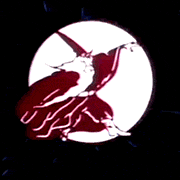|
Snowy posted:So if we could travel faster than the speed of light could we take an amazing telescope far enough into space that we could turn it around and and see any event in history depending on how far we traveled? Only if the light reaching your amazing telescope also travelled faster than the speed of light.
|
|
|
|

|
| # ? May 28, 2024 23:30 |
|
logical fallacy posted:Only if the light reaching your amazing telescope also travelled faster than the speed of light. But you need to get ahead of it to be able to see into the past
|
|
|
|
I think travelling faster than the speed of light causes problems for relativistic time as well. The faster you go the slower time passes for you relative to things going slower, and if you were able to go faster than light I think you would have to be going backwards or something. I don't really understand how relativity works to be honest, physics is all a scam set up by big mathematics who conspire to make satellites not work if you don't employ them.
|
|
|
|
Snowy posted:But you need to get ahead of it to be able to see into the past Yeah I had that completely backwards. It would have to be incredibly precise FTL travel because as far as I can tell that would be the only thing determining what you saw looking back. Unless the ship could overshoot the target distance, decelerate instantly, turn back around, and then more precisely line up. But without that, much like a small change in direction can make a huge difference in where you end up, a small change in speed could mean you're off by centuries or more for what you want to see. It would make a good plot to a sf book to have a ship heading towards a habitable planet many lightyears away, only to watch (through an amazing telescope) another species' civilization evolve before them. In fact, I think I've read a short story like this, only it just involved humans.
|
|
|
|
logical fallacy posted:In fact, I think I've read a short story like this, only it just involved humans. I’d like to read it! The story I usually come up with is a space telescope for hire that can solve mysteries throughout history E- my job can get pretty repetitive sometimes so I keep some dumb ideas like this in my back pocket to either get funny conversations going or have people say “what’s wrong with you?”
|
|
|
|
Ken Liu wrote a novella called The Man Who Ended History: A Documentary where they do some photon entanglement stuff to observe the past, only observing something is thus a one-time thing for one person. its p good
|
|
|
|
central dogma posted:Also, I'd like to introduce everyone to a nice microbiology channel called Journey to the Microcosmos. No biology background necessary. The microscopy is pretty cool and the narrator's voice is great for sleepy time. This video keeps up with the death/void trend of the last few pages. Wow, Hank Green sounds really pleasant when he's talking in a slower tempo rather than that superfast speech he does for his sci show and crash course videos. (Not that I hate those, btw, it's just surprising.)
|
|
|
|
Taeke posted:Wow, Hank Green sounds really pleasant when he's talking in a slower tempo rather than that superfast speech he does for his sci show and crash course videos. (Not that I hate those, btw, it's just surprising.) Its like audible melatonin
|
|
|
|
Snowy posted:So if we could travel faster than the speed of light could we take an amazing telescope far enough into space that we could turn it around and and see any event in history depending on how far we traveled? In principle, to some extent you could investigate history in this way. But of course, if FTL is possible, then all of our "principles" go out the window anyway. Leaving that big problem aside, though, "in principle" is still really far from "in practice." The limitations are probably a lot more severe than you think. In order to see something with a telescope, you've gotta collect a sufficient amount of light for you to tell the difference between a light and dark part of the image. And if you're looking at something really far away, there's not a lot of light to collect. We're only able to see stuff that's really far away (e.g. the supermassive black hole images that were released recently, or the Hubble Deep Field) by collecting light for a long, long time. If you're familiar with photography at all, this is the same reason why you need a slower shutter speed in low-light conditions - a slower shutter keeps the aperture open longer to collect more light. Let's say you wanted to witness Julius Caesar's army crossing the Rubicon in 49 BC, and you want to perhaps lip-read Caesar to see if he really said "the die is cast". So you get in your newly discovered FTL teleport ship and teleport to 49+2021 = 2070 light years away, in whatever direction you've calculated lets you see the Italian peninsula. So here's some really rough back-of-the-envelope calculations: If you want to read Caesar's lips, you're going to have to have a "shutter speed" on your camera of like 1/20 of a second or something, to get video that isn't too choppy. And you're going to need to resolve sizes of about a centimeter or maybe even less. So how much light energy does one square centimeter of human skin in sunlight give off? Under the most ideal conditions, it can't be more than 0.1368 watts, if it has an albedo of 1 and is angled perfectly in direct sunlight. Let's call it 0.1W. At a visible wavelength of 500-600nm, that's gonna be ~3*10^-19 J per photon. 0.1W / 3e-19J * 1/20 s/frame = ~1.5*10^16 photons per frame. These photons are spread across a sphere 2070 light years in diameter, so that's a surface area of ~5*10^39 m^2, and dividing by 1.5*10^16, that gives ~3*10^23 square meters of collecting area required to capture a single photon, which corresponds to a radius of 3*10^11 m. You're gonna need to collect more than one photon for good data, though - so maybe 100 times that area. So you're looking at a telescope with an aperture about 10^13 m in diameter, which is almost half a light-day, or roughly the size of the orbit of Neptune. As in, tiny-rear end Neptune will travel along the rim of your Dyson-sphere-sized telescope. And if you want to look further back in time than that, the calculations only get worse. If you relax your targets, and say you only want a snapshot of Earth with a resolution of, say, a square mile, so you can see cities and stuff, then you can do better - but you're gonna have to contend with the rotation of the Earth, so you can't do a lot better - you can still only collect light for about four seconds before the equator rotates by about a mile and blurs your image.
|
|
|
|
What about receiving radio transmissions? What if there was a laser with NBC news encoded on it, shining along a vector fixed with respect to (say) the solar system? Let's say the laser has about the same amount of power behind it as an AM radio station, 50kw. How far out could it plausibly be received?
|
|
|
|
DontMockMySmock posted:In principle, to some extent you could investigate history in this way. But of course, if FTL is possible, then all of our "principles" go out the window anyway. nice! but if you have a FTL teleporter ship, you can just jump around the 3e23 m² area, perhaps going a bit further out every time to account for equipment setup/teardown
|
|
|
|
Uncle Enzo posted:What about receiving radio transmissions? What if there was a laser with NBC news encoded on it, shining along a vector fixed with respect to (say) the solar system? Let's say the laser has about the same amount of power behind it as an AM radio station, 50kw. How far out could it plausibly be received? I think that lasers have a pretty heavy upper limit on how long they can remain coherent because of physics or something.
|
|
|
|
you just zap away and then zap back to earth and watch it from close up, because if you have a ftl space ship you literally have a time machine
|
|
|
|
DontMockMySmock posted:In principle, to some extent you could investigate history in this way. But of course, if FTL is possible, then all of our "principles" go out the window anyway. This is amazing thank you. Unfortunately I’m very dumb but it’s still fun to read. Maybe I’ll adjust my telescope ship to fly along with the earth’s orbit to allow a longer and steadier shot, avoiding some of the blur you mentioned. By the time I’m able to have a massive ftl telescope I think I’ll also have the ability to say “enhance” and have it work.
|
|
|
|
https://www.youtube.com/watch?v=wrwgIjBUYVc
|
|
|
|
Snowy posted:So if we could travel faster than the speed of light could we take an amazing telescope far enough into space that we could turn it around and and see any event in history depending on how far we traveled? If you can travel faster than light, then you can actually travel backwards in time and go visit history. Any FTL device is also a causality-violation device.
|
|
|
|
but seriously read the ken liu story i mentioned earlier, its good
|
|
|
|
 https://twitter.com/worldsstrongest/status/1406417234642169857?s=21
|
|
|
|
DontMockMySmock posted:And if you want to look further back in time than that, the calculations only get worse. For the Stupid/Small Question Thread, I calculated what it would take to get a decent photo of a T. rex. Platystemon posted:“Planet sized” is deeply understating it.
|
|
|
|
Platystemon posted:For the Stupid/Small Question Thread, I calculated what it would take to get a decent photo of a T. rex. So this won't cut it then? 
|
|
|
|
OwlFancier posted:Also the you that wakes up when you do sleep is arguably not continuous with the one that had trouble sleeping so that's someone else's problem. What?
|
|
|
|
Biplane posted:What? Realistically there is no continueity of experience between the you that falls asleep, and the you that wakes up, so in an absolutely pure sense, you cannot declare the one to be the other. However, from an entirely ordinary experience, the chances are 100% that the one is absolutely the other, and pretending that the alternative is the standard default position is both childish and stupid.
|
|
|
|
Pookah posted:Realistically there is no continueity of experience between the you that falls asleep, and the you that wakes up, so in an absolutely pure sense, you cannot declare the one to be the other. However, from an entirely ordinary experience, the chances are 100% that the one is absolutely the other, and pretending that the alternative is the standard default position is both childish and stupid. Oh, yes I see. Thank you for explaining 
|
|
|
|
Buttchocks posted:It didn't go in, it just impacted on the surface.  
|
|
|
|
15kg for anyone curious. Brian Shaw is a monster.
|
|
|
|
Brian Shaw's tied in first place for the number of top 3 finishes at WSM, and he's one first-place finish short of tying that record too. He's not even on the same level as the typical competitor.
|
|
|
|
History Channel did a show called The Strongest Man in History, where 4 Strongman competitors (Brian Shaw, Nick Best, Eddie Hall, & Robert Oberst) travelled to various places to take on legendary feats of strength. There are 2 parts of the show that I really enjoyed. The first was watching the guys eat. Wherever they went, the guys would stop and eat somewhere local, and order insane amounts of food. Brian mentions in the clip that he needs about 10,000 calories a day to maintain his size. The other neat thing, is that before attempting various feats of strength, they have the Average Guy step in to try. Average Guy is one of the camera crew, who steps up and does his best at whatever the strongmen are about to do. It gives a good perspective on how crazy strong these human bulldozers are. In Episode 7, there is a Boston Tea Party feat, where the men compete to throw 250lb crates of Tea into the harbour. Average Guy steps up, and can barely budge one of the crates. Cue the Strongmen, throwing the crates around like it Ain't No Thang. It's very impressive stuff.
|
|
|
|
B33rChiller posted:The thing that's blowing my dial right now, is the realisation that our entire perception of the world works like this. It's entirely retrospective. Any stimulus my brain receives is the result of something that happened in the past. I'm not seeing or hearing things as they happen, but shortly after. It's just the lag time is different. Have I got a vsauce for you: https://www.youtube.com/watch?v=BTOODPf-iuc
|
|
|
|
logical fallacy posted:Yeah I had that completely backwards. It would have to be incredibly precise FTL travel because as far as I can tell that would be the only thing determining what you saw looking back. Unless the ship could overshoot the target distance, decelerate instantly, turn back around, and then more precisely line up. But without that, much like a small change in direction can make a huge difference in where you end up, a small change in speed could mean you're off by centuries or more for what you want to see. This is in fact the plot of the star trek episode "The Squire of Gothos"
|
|
|
|
His Divine Shadow posted:Have I got a vsauce for you: The fact that a man on a motorbike travels faster than my perception of reality is too neat for me to be freaked out by it.
|
|
|
|
Why is this guy making this loving face at me
|
|
|
|
He's tired of your poo poo, you're not fooling him.
|
|
|
|
It makes me want to punch him, but also I am a dimwit so
|
|
|
|
Michael is blessed, do not punch him
|
|
|
|
Snowy posted:This is amazing thank you. Unfortunately I’m very dumb but it’s still fun to read. Maybe I’ll adjust my telescope ship to fly along with the earth’s orbit to allow a longer and steadier shot, avoiding some of the blur you mentioned. Small problem: you are ~2000 light years away. This means, roughly speaking, you need to maintain an average real-space speed of >12,000 ly/day to keep up. I thought you needed a hypermassive object and an FTL spaceship but apparently you only need a sufficienly fast FTL spaceship to go back in time? https://www.pbs.org/wgbh/nova/article/can-you-really-go-back-in-time-by-breaking-the-speed-of-light/ or https://arxiv.org/pdf/1505.07489.pdf if you need the detail.
|
|
|
|
thepopmonster posted:I thought you needed a hypermassive object and an FTL spaceship but apparently you only need a sufficienly fast FTL spaceship to go back in time? Traveling any faster than c equates to time travel.
|
|
|
|
thepopmonster posted:Small problem: you are ~2000 light years away. This means, roughly speaking, you need to maintain an average real-space speed of >12,000 ly/day to keep up. We're practically halfway there already!
|
|
|
|
Has anybody seen the vsauce guy, the folding ideas guy, and anthony fantano in the same room together?
|
|
|
|
Phanatic posted:Traveling any faster than c equates to time travel. Moving at all equates to time travel, it only becomes noticeable as you approach C
|
|
|
|

|
| # ? May 28, 2024 23:30 |
|
His Divine Shadow posted:This is in fact the plot of the star trek episode "The Squire of Gothos" ok so i just pulled up the episode because that sounds rad and all i can think is “these idiots never saw star trek before” because they’re sitting at their little bridge consoles drinking coffee as though it’s not about to go red alert and slam into their faces 
|
|
|










































